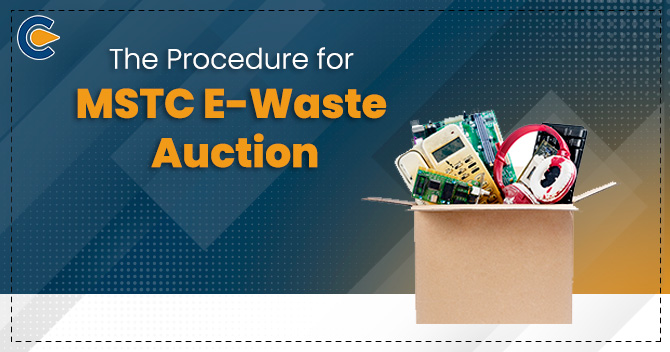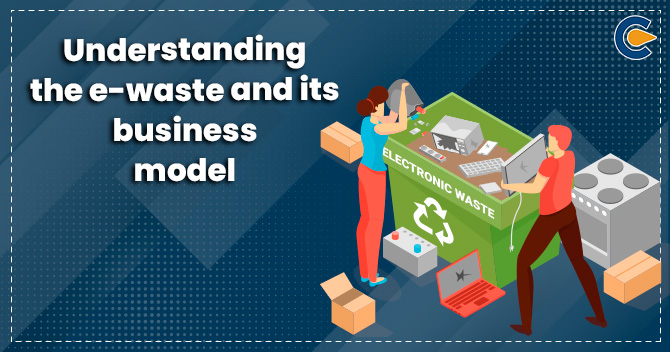In India, E-waste is a serious emerging issue. India is the third largest E-waste producer in the world, and approximately 3.23 million metric tonnes of e-waste are produced annually. Among this, 70% are computer equipment, followed by cellphones at 12%, electrical equipment at 8% and medical equipment at 7%. It’s high time to address India’s e-waste in a proper e-waste recycling method.
Types of Electronic Waste
E-waste can be divided broadly into four categories
| Categories | Examples |
| Home Appliances | LED/LCE/TVRefrigeratorsMicrowave ovenWashing machinesHome air conditionersElectric stoves |
| Communication and Information Technology Devices | Mobile PhonesDesktop computers and LaptopsPrinters, Hard driversCircuit Boards, Memory chips |
| Electronic Utilities | Remote controlsSmartwatchesHeaters, hair dryers |
| Medical Equipment | Cord and cablesPower strips and power suppliesImaging equipmentDialysis machine |
How Can a Business Make a Profit from Its E-Waste Recycling?
- Any business handling electronic equipment, such as the IT sector or ITES sector and OEMs of electronic and electrical equipment (EEE) producers, can manage their e-waste by re-selling the individual components of the e-waste like the board, RAM, wires etc.
- Before tagging the product as e-waste, extensive testing can be done so that the worth of reusing the product in its original form can be known, and these products can be repaired and sold in the secondary market for good profits.
- Many businesses generate electronic waste items regularly due to the high penetration of EEE in the day-to-day functioning of businesses today. It can also profit from its e-waste by dismantling or auctioning the electronic parts and selling them to different industries like plastics, metals, and aluminium. They can also benefit by sending their e-waste to any e-waste handling business unit.
- In some cases, valuable metals can be extracted from different components of the e-waste, which can be sold at a high cost.
- The EEE producer who is obliged to ensure its EPR (Extended producer responsibility) can follow some of these steps to maintain its EPR status and avoid legal penalisation.
Processes Involved In E-Waste Recycling
There are various processes involved, from the gathering of e-waste and separating it to preparing it for sale as a final product.
- Collection
Collecting electronic waste from recycle bins, e-waste collecting agencies, local bodies/municipal bodies, organisations, and individuals is an essential step in the e-waste recycling process. At this step, the collected e-wasted is segregated based on its kind because so much different e-waste would be mixed up, and if not appropriately handled, significant damages may be caused to the environment.
- Storage
Storing may not be a priority process, but it benefits the shelf life of the collected e-waste.
- Sorting, Dismantling and Shredding
After the collection process, the collected e-waste is sorted based on general categories such as television, computers, phones, printers and others. Once the equipment is sorted, it is broken down into parts. Components such as computer monitors, keyboards, and power supplies are sold individually to buyers who want to reuse them. The remaining components of the electronic equipment are either recycled or destroyed. Most electronics are made of various materials, so breaking them down into small pieces allows them to be mechanically separated.
- Separation by mechanical means
Among mechanical separation, magnetic separation, and water separation are the main methods.- Magnetic separation
The crushed e-waste is fed through a massive magnet, which can separate ferrous metal from steel and iron from the rest of the garbage. Subsequently, these materials are sent to melting plants for recycling, and other metals like polymers and meta-embedded boards are separated. - Separation by water
The water separation method is used to separate the components like plastic and glass.
- Magnetic separation
- Recovery of the final product
Now that the materials are sorted and can be reused or sold, the materials such as plastic and glass can be transferred to different recycling processes.
- Safety measures during E-waste recycling
Toxic heavy metals will be found in heavy quantities in collected e-waste, such as lead and mercury. So proper safety measures are required to protect the well-being of the employees.
Environmental Law Applicable For E-Waste Management
Before establishing the e-waste recycling plant, the owner of the recycling plant has to take permission from the concerned department. After scrutinising all the required documents, the concerned department will decide whether the project gets accepted or rejected.
The E-waste Management Rules (Amendment) 2022 shall apply to every producer, manufacturer refurbisher, dismantler and recycler involved in the manufacture, sale, transfer, purchase, refurbishing, dismantling, recycling and processing of e-waste listed in Schedule I, including their components, consumables, parts and spares which make the product operational.
E-Waste Recycling Business – License and Permission
A wide range of government permissions and licenses is required to start an e-waste recycling business. However, the basic specifications that are needed to start the business are:
- Registration at UDYOG Aadhar to begin an e-waste recycling business.
- Registration on the centralised CPCB Portal[1] for
- Consent certificate from SPCB/PCC
- ISO certificate
- GST registration
- Authorisation under E-Waste management rules 2016
CPCB Guidelines for E-Waste Recycling
As per CPCB, a recycler is one who is engaged in recycling and reprocessing waste electrical and electronic equipment or their components.
- Recyclers may set up their collection centres, and those details should be entered in their authorisation document. Recyclers can obtain raw materials such as waste electrical and electronic components or used components from producers, e-waste exchange, dismantlers, and consumers/bulk consumers.
- The recyclers’ product must be sent or sold to users or other recyclers with valid CTO from SPCBs/PCCs.
- In the producer’s channelisation system, a recycler should be a part.
- A recycler has to get consent to establish (CTE) from SPCBs/PCCs.
- A recycler has to get consent to operate (CTO) from SPCBs/PCCs.
- A recycler has to get authorisation from SPCBs/PCCs under the E-Waste (Management) Rules, 2016.
- A recycler should have appropriate weighing equipment for each delivery received and maintain a record in this regard.
- The unloading of recycled products should be carried out with a concern that there should not be any damage to health, the environment or the product itself.
A recycler should have facilities for destructing or permanently deleting data that is stored in the memory of the products that are going to be recycled, such as Hard disks, Mobile phones either through shredding or grinding or through a data eraser.
Documents Required For Registration for E-Waste Recycler
- Copy of valid Consent to Operate.
- Copy of registered certificate issued by the District Industries Centre or MSME
- Manufacturing process flowchart & description.
- Details of Pollution Control devices.
- Photograph of the unit/production site.
- Details of worker/ staff/ management, i.e. Number, Age, Educational Qualification.
Documents Required For EPR Authorization
Every producer of EEE listed in schedule 1 seeking EPR authorisation should fill out form 1. The following are the documents required to fill out form 1
- Details of the suggested awareness programmes and allied initiatives.
- Estimated budget earmarked for EPR
- Copies of agreement documents with dealers, collection centres, dismantlers, recyclers, treatment etc.
- Self-declaration for compliance with RoHS.
- The technical documents (supplier declaration- description of the product, document for materials, parts, and sub-assemblies and analytical test result) .
- Copy of the permission/licence from the relevant ministry or department for marketing
- various
products or for doing business as given below:
- TIN details
- PAN details
- Incorporation certificate
- Copy IEC in case of an importer
- Copy of authorisation issued by the SPCBs earlier under E-Waste Management Rules 2016.
Conclusion
Handling e-waste is crucial in terms of both environmental factors and security points. EPR, which is the responsibility of every producer of EEE (to channelise the e-waste to authorised dismantlers or recyclers to ensure proper management of E-waste), becomes crucial when recycling e-waste as recyclers are the entities that help producers in fulfilling their EPR targets. This has resulted in a considerable scope for such businesses. India’s e-waste management businesses have risen nearly 40% compared to previous years. The pandemic-induced use of electronic devices such as laptops increased the burden of e-waste management. Entrepreneurs looking for profitable investment can use this as an opportunity to invest in this lucrative e-waste recycling business.
Read Our Article: An Overview Of The E-Waste Recycling Business











